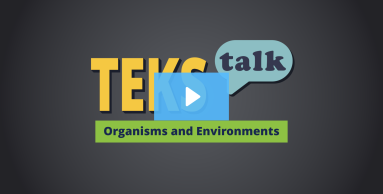- Science
- Grade 2
- Organisms and environments
Science.2.13.C
record and compare how being part of a group helps animals obtain food, defend themselves, and cope with changes; and

Knowledge and Skills Statement
Describe a scenario where species use grouping for different purposes. For example, zebras feed in a herd and wolves hunt in a pack. Being part of a group benefits each animal in different ways. Students will write to explain how being in a group benefits each species differently. In the zebra example, students might explain that zebras feed in a herd because it is harder for a predator to isolate one zebra when they are all standing close to each other. This protects the whole herd. Wolves hunt in a pack because they can work together to surround the prey animal they are hunting. If wolves hunted individually, separating one prey animal would require much more energy. Students will confirm their understanding by sharing their explanations with a peer.
Research
Dobson, Christopher, and Dan Postema. “The Amazing Ecology of Terrestrial Isopods.” Science and Children 51, no. 7 (2014): 60-66.
www.nsta.org/science-and-children/science-and-children-march-2014/amazing-ecology-terrestrial-isopods.
Summary: This article describes a study done in an elementary classroom on how roly-polies interact with their environment. Roly-polies were chosen because they are easily accessible and safe for children to handle and observe closely. This study shows how organisms interact with non-living things (sunlight, water, temperature) and other living things, either by competition or mutualism. Students observe how roly-polies use things in their environment to help them survive by finding moist and dim areas. Roly-polies also benefit from group behavior by huddling together in response to water loss or warmth.
Research
Cook, Kristin, and Jessica Ivy. “I Will Survive: An Engineering Design Challenge for the Virtual Classroom.” Science and Children 59, no. 5 (2022): 57–61. www.nsta.org/science-and-children/science-and-children-mayjune-2022/i-will-survive.
Summary: In this article, students design an animal with structures specifically used to help it survive after environmental changes. Students should know about habitats, animal adaptations, and human environmental impact. Students are asked to provide evidence of how their animal structures help them survive.
